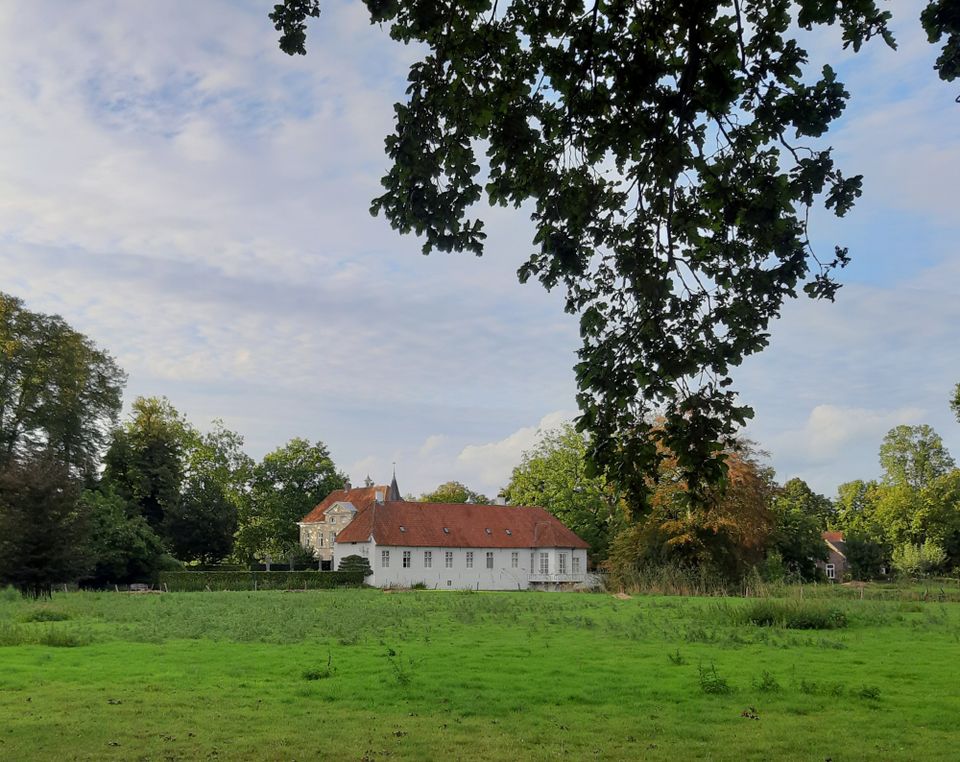castle Eyckenlust
In 1643, the manor (Beek en Donk) was sold by King Philip IV of Spain. The buyer was Jan Baptista van Elen. In 1646, the fiefdom was sold to P…
In 1643, the manor (Beek en Donk) was sold by King Philip IV of Spain. The buyer was Jan Baptista van Elen. In 1646, the fiefdom was sold to Philips van Leefdael. He died in 1681, after which his son Johan Philips van Leefdael inherited the seigniory. In 1711, the seigniory came into the hands of the marquis of Asse, Jean de Coutereau, who was married to Johan Philips' daughter, Cornelia Johanna van Leefdael. Jean died in 1730 and Cornelia sold the seigniory in 1734 to Johan Peter van Raesfeldt. Johan Peter van Raesfeldt sold the estate in 1745 to Gisbert de Jong. In 1794, when Gisbert died, the manor came to Benjamin de Jong. He had two children: Johan de Jong (died in 1846) and Gerrit de Jong. The estate was divided between the two, but in 1809 Johan also received Gerrit's part. After the French era, the administrative rights of the manor were abolished. Rights such as the right to hunt still existed until 1923. One of the later residents, jhr. Jan Olphert de Jong van Beek en Donk (1863-1935), was governor of Curaçao. He was married to Mrs Elisabeth Maria Stern. The castle is still in the possession of the De Jong family, a branch of which has been elevated to the Dutch nobility and bears the name de Jong van Beek en Donk.
The oldest existing part is the gatehouse. This dates from around 1500. It has a natural stone entrance gate and a turret. The rest of the castle has been rebuilt regularly. A stone with the date 1658 probably indicates the year when it was rebuilt. Whether an earlier castle was destroyed during the Eighty Years' War is not known. In 1812, a large part of the castle was demolished and rebuilt, while in 1870 major rebuilding took place. In 1978, the building was restored. The castle is situated within a moat. The castle lies on the Aa. The paths on the 61 ha large estate are freely accessible, only the immediate vicinity of the castle is not. The estate consists for a part of forest (mainly poplars) and some farms.
Gatehouse with bridge
According to the 1832 cadastral map, there were two lower angled side wings (dwellings) on either side of the gatehouse, which were probably demolished at the end of the 19th century and replaced by two sloping walls. The building of hand-formed brick, built on a square base, consists of two storeys under a tent roof covered with slates in maze covering and crowned by a roofing gable. The gateway with a wooden entrance gate painted in yellow and blue has a limestone profiled frame with corner blocks, whose segmental arch rests on two consoles with sculpted heads.
Gardener's house
The building is constructed of hand-formed brick with a cemented front and rear gable (spout gable) and consists of one storey under a gable roof covered with Old Dutch tiles (wind boards). The front façade is regularly divided with two six-pane windows and to its right a lifted door with a two-pane fanlight, in the top a four-pane window. In the rear façade are two small iron stable windows. Further renewed windows and a small recent kitchen extension against the side elevation.
Barn
The white-painted barn is built of hand-formed brick. At the north-west gable end are two later double doors, above them a wooden hatch; other gables with doors and arched windows framed in plastered mouldings; doors painted in hourglass motif.
Historic garden and park layout
The core of the layout is formed by the spacious enclosed pentagonal castle island, accessible via the gatehouse; between the gate and the main building a short lane planted with approx. 200-year-old lime trees ends in a forecourt. 19th-century topographical maps show that from the present Bosscheweg an access lane ran slightly east of the present lane, which was laid out in c. 1941 in the axis of the main building; the old lane first followed a straight alignment and then curved towards the gatehouse. From Gemertseweg, a second entrance lane ran parallel to the erratic river Aa; parts of this have been preserved.

